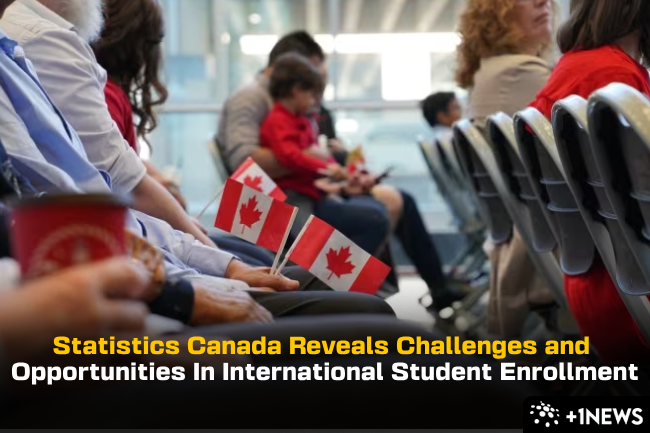Canada has seen a significant surge in its international students, sparking debates about the impact of this growth on the country’s educational institutions, workforce, and broader socio-economic landscape.
A recent report by Statistics Canada sheds light on a surprising revelation: nearly one in four study permit holders in 2019 were not enrolled in Canadian publicly funded post-secondary educational institutions, despite having the authorization to do so.
Jump to:
The Number of International Students
In 2019, out of 717,300 international students holding Canadian post-secondary study permits, 24% (172,152 students) did not enroll in post-secondary institutions.
Data from a study that cross-referenced the Longitudinal Immigration Database (IMDB) with the Post-secondary Student Information System (PSIS) reveals that approximately 54.5% of the students, equating to 93,822 individuals, who were not enrolled in educational programs were present in Canada and involved in various activities other than education.
This statistic has prompted a closer examination of the activities these unenrolled students chose to pursue during their time in Canada.
Diverse Activities
The study, conducted by researchers Youjin Choi and Feng Hou, uncovered that more than half of the non-enrolled international students (54.5%) were in Canada and engaged in various activities.
Notably, roughly a third of these students held other temporary permits, specifically work permits, allowing them to engage in full-time work.
While students can have both work and study permits simultaneously, the study challenges the assumption that most unenrolled students are part of co-op programs.
Industries and Work Patterns
The industries in which these unenrolled students found employment provide intriguing insights. A significant majority (70.3%) secured paid jobs in sectors known for part-time work and high turnover positions.
These industries included wholesale and retail trade (22%), accommodation and food services (31.2%), and business, building, and other support services (17.1%).
This suggests that many of these students may be working part-time jobs, aligning with the 20-hour work limit during school semesters allowed by study permits.
Implications and Challenges
While the sheer number of unenrolled international students raises concerns, the study acknowledges certain limitations.
The absence of data on students attending privately funded post-secondary institutions and the lack of correlation with employment information, such as earnings, leave some questions unanswered.
The Housing Conundrum
One significant implication is the pressure on housing in provinces with high numbers of unenrolled students, particularly British Columbia and Ontario.
Unable to access on-campus housing, these students contribute to housing market pressures as they seek accommodations off-campus.
This raises questions about the sustainability of the current international students without proper moderation.
Addressing Concerns
The findings also prompt a reconsideration of the role of Immigration, Refugees, and Citizenship Canada (IRCC) in monitoring and ensuring the enrollment of international students in post-secondary educational institutions.
The data suggests a need for a more nuanced approach to managing international student numbers, ensuring their positive impact on the Canadian economy and society.
Opportunities Arising
Amidst the challenges, it is noteworthy that unenrolled international students played a role in mitigating job vacancies in industries with persistent staffing needs.
Their ability to find employment in these sectors, albeit technically breaking the conditions of their stay, underscores the adaptability and resourcefulness of the international student population.














